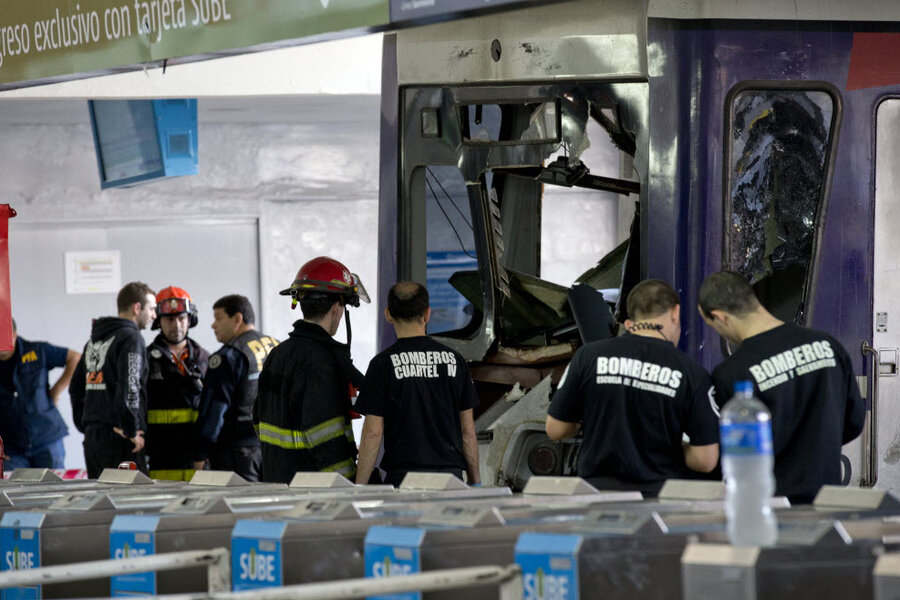Argentina train crash results in injuries, accusations
Loading...
| Buenos Aires, Argentina
An Argentine commuter train slammed into the end of the line Saturday morning at the same station in Buenos Aires where 52 people were killed in a similar crash last year. This time there was no immediate report of deaths, but at least 80 people were injured.
A mob quickly formed, unleashing its fury at the train operators. Passengers chanted "murderer, murderer!" at the injured driver through the shattered cabin window. Officers intervened and the driver was soon hospitalized under police custody.
Police in riot gear then took control of the Once (ohn-say) station after the angry crowd broke glass and threw stones in the street outside.
At least 80 people were injured, including an 8-year-old boy, according to the Security Secretariat. Of those, five people had broken bones, but none of the wounds were life-threatening, said Security Secretary Sergio Berni. Some of the injured here hit by shattered glass from the train's windows, he said.
Berni said it was too early to say why the train failed to stop, crashing through the bumper at the end of the line and ending up wedged between the floor and ceiling of the platform. One end of the huge iron hydraulic bumper that protects the end of the line was driven deep into the train car, while the other end was lifted over the platform and jammed into the turnstiles.
Jorge Ramirez , a 47-year-old cook, entered the train's second car nine stations before the end of the line. He told The Associated Press that the driver overshot several platforms and had to go in reverse before opening the doors, and that he bypassed one station altogether. Other passengers, however, said that the train seemed to be proceeding correctly.
"This is all a tragedy. I saw people hurt, shouting, others thrown on the floor. The people in the first wagon ended up piled on top of each other," Ramirez said.
Berni said some of the injured were waiting on the platform and were hit by glass as the train's windows shattered.
Firefighters, police and medical personnel evacuated the wrecked train, but many passengers didn't wait, kicking out windows to escape cars whose doors were stuck.
"Suddenly the train wasn't stopping. It came off the rails and crashed into the ceiling, which stopped it. Then an impressive cloud of smoke came out," said Maxi Jaquet, who sells hot dogs in the station. "We ran and began to help."
The Sarmiento line is the busiest commuter rail line serving Argentina's capital and is usually packed with passengers. The February 2012 crash killed 52 people and injured hundreds as the following cars crumpled. Saturday's accident caused less damage to other cars in the formation and happened shortly after 7 a.m. on a weekend morning, so the toll was not as severe.







